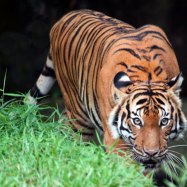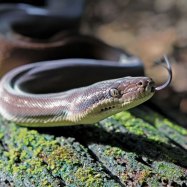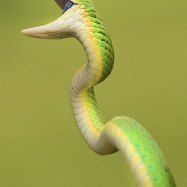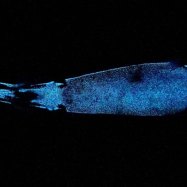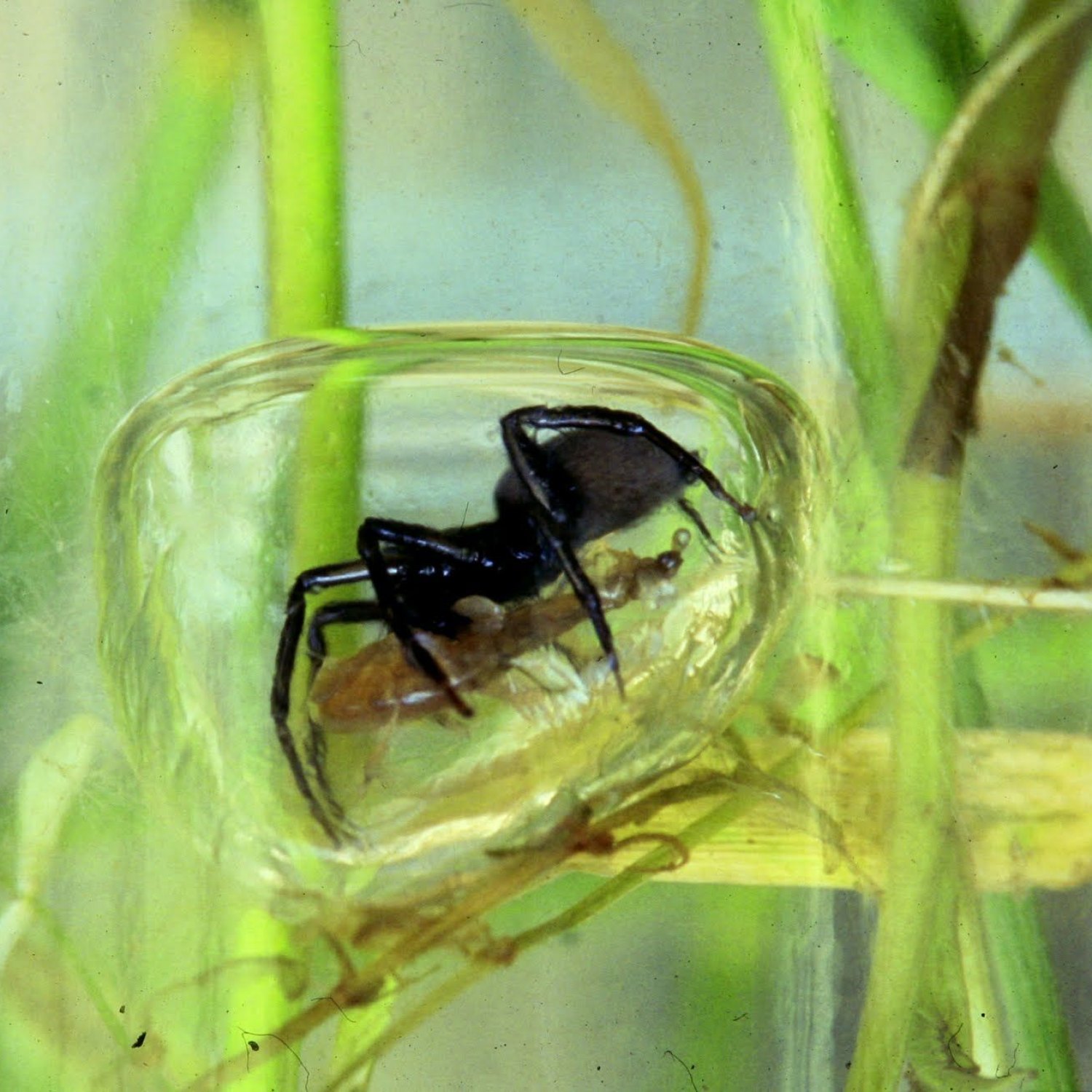
Diving Bell Spider
8 to 15 millimeters (0.3 to 0.6 inches)
The Diving Bell Spider, named for its ability to create an underwater diving bell for hunting, is a tiny yet fascinating creature found in freshwater habitats. Ranging from 8 to 15 millimeters in length, its compact and streamlined body shape allows it to move effortlessly through the water. Belonging to the Cybaeidae family, this spider is a great example of adaptation to its environment. #AnimalFacts #UnderwaterCreatures #DivingBellSpider
Animal Details Summary:
Common Name: Diving Bell Spider
Kingdom: Animalia
Habitat: Freshwater rivers, ponds, and marshes
The Fascinating World of the Diving Bell Spider: A Master of Underwater Survival
Nestled in the freshwater rivers, ponds, and marshes of Europe and Asia lives a creature that has fascinated scientists and nature enthusiasts alike – the diving bell spider. Scientifically known as Argyroneta aquatica, this arachnid is commonly referred to as the diving bell spider due to its unique ability to create an air-filled underwater web, mimicking a diving bell.But what makes this tiny spider so remarkable? From its unique survival tactics to its striking features, let's dive deeper into the world of the diving bell spider.
The Kingdom of the Diving Bell Spider
The diving bell spider belongs to the Animalia kingdom, a diverse group of organisms that have complex cells and are multicellular Diving Bell Spider. Within this kingdom, the diving bell spider belongs to the arthropoda phylum, which includes animals with segmented bodies and exoskeletons made of chitin.The Life of an Arachnid
As a member of the arthropoda phylum, the diving bell spider shares the same class as other eight-legged creatures such as scorpions and ticks – the arachnida class. Unlike insects, which have six legs, arachnids have eight legs and no antennae.Within this class, the diving bell spider belongs to the araneae order, which includes most of the spiders we commonly see. What sets the diving bell spider apart is its family – the cybaeidae family, a small group of spiders that are adapted to live in aquatic environments.
A One-of-a-Kind Habitat
As its name suggests, the diving bell spider prefers to live in freshwater habitats, making itself at home in rivers, ponds, and marshes. Its unique ability to survive underwater makes it well-adapted to this environment, and it can be found in countries across Europe and Asia.But unlike most spiders that spin webs to catch prey, the diving bell spider lives mainly underwater. Its compact and streamlined body shape, coupled with its ability to hold air bubbles on its abdomen, makes it an excellent aquatic hunter Dinofelis.
Surviving Underwater
You may be wondering, how can a spider survive underwater? The answer lies in the diving bell spider's fascinating web-building abilities. Much like its land-dwelling counterparts, the diving bell spider spins webs, but with a twist.Using its hind legs, the diving bell spider weaves silk into an underwater web, attaching it to vegetation, rocks, or other objects. Once the web is secured, the spider collects air bubbles from the surface and brings them down to the web, creating a bubble-filled structure, or a "diving bell."
This air-filled web serves several purposes for the diving bell spider. It allows the spider to breathe while underwater, as it can come up to the surface and gather air bubbles to replenish its diving bell. The web also acts as a place to store prey, with the spider using it as a hunting ground for aquatic insects, crustaceans, and even small fish.
A Carnivorous Diet
Speaking of prey, the diving bell spider is a carnivorous creature, meaning it feeds on other animals. As mentioned, its main diet consists of aquatic insects and small fish, which it captures using its speedy hunting abilities.The spider's specialized mouthparts allow it to pierce through the tough exoskeletons of its prey, injecting them with venom and digestive fluids to liquefy their insides. It then sucks up the liquid through a small hole, leaving behind a carcass.
The Unique Appearance of the Diving Bell Spider
In terms of appearance, the diving bell spider may not be as colorful as some of its arachnid cousins, but it has a distinct camouflage that allows it to blend in with its surroundings. Its body is usually brown or dark grey, allowing it to hide among the murky waters.As mentioned, its body is compact and streamlined, with a size ranging from 8 to 15 millimeters or 0.3 to 0.6 inches. This size may seem tiny to us, but to the diving bell spider, it's perfect for navigating through underwater obstacles and hunting prey.
A Living Marvel of the Natural World
The diving bell spider may be small in size, but its unique characteristics make it a marvel of the natural world. Its ability to thrive underwater and its expert hunting abilities make it an incredible feat of adaptation and evolution.Moreover, the diving bell spider has caught the interest of scientists who study its web-building abilities to create underwater structures for human use. Its resilience and creativity have inspired the development of new technologies, proving that even a tiny creature like the diving bell spider can make a significant impact in our world.
The Future of the Diving Bell Spider
Unfortunately, like many species, the diving bell spider's population is threatened by human activities such as pollution and habitat destruction. As a result, its numbers have declined in some areas, putting it on the International Union for Conservation of Nature's (IUCN) Red List of Endangered Species.But there is hope for this remarkable creature. Some conservation efforts have been put in place to protect the diving bell spider's habitat and population, ensuring its survival for generations to come. Additionally, through education and awareness, we can all play a part in preserving the diverse and incredible species that call our planet home.
In conclusion, the diving bell spider may not be as well-known as other animals, but it's undoubtedly a fascinating creature worth learning about. Its unique abilities, survival tactics, and contribution to scientific advancements make it a true living marvel of the natural world. So next time you're near a freshwater habitat, keep an eye out for this tiny arachnid and appreciate the incredible world it inhabits.

Diving Bell Spider
Animal Details Diving Bell Spider - Scientific Name: Argyroneta aquatica
- Category: Animals D
- Scientific Name: Argyroneta aquatica
- Common Name: Diving Bell Spider
- Kingdom: Animalia
- Phylum: Arthropoda
- Class: Arachnida
- Order: Araneae
- Family: Cybaeidae
- Habitat: Freshwater rivers, ponds, and marshes
- Feeding Method: Carnivorous
- Geographical Distribution: Europe and Asia
- Country of Origin: Europe
- Location: Freshwater habitats
- Animal Coloration: Brown or dark grey
- Body Shape: Compact and streamlined
- Length: 8 to 15 millimeters (0.3 to 0.6 inches)
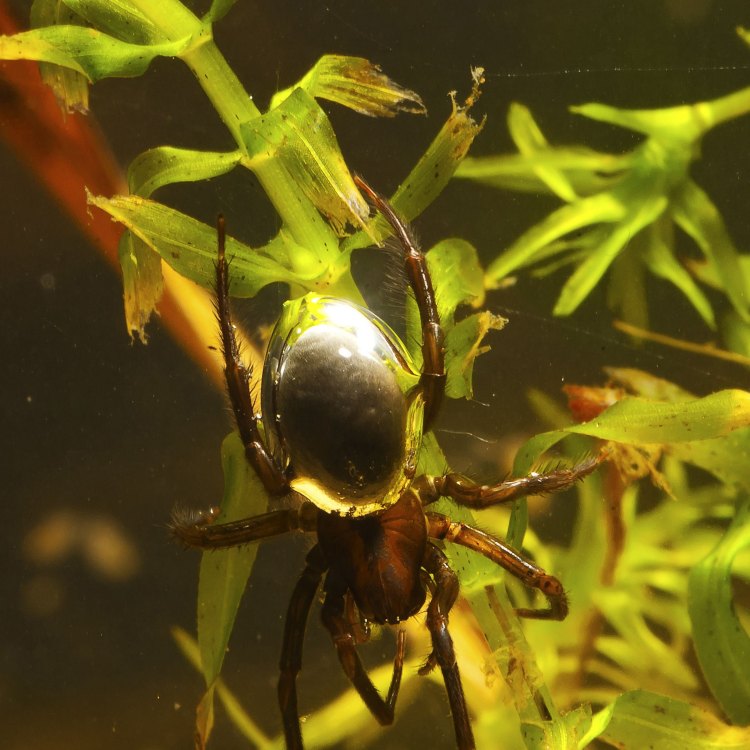
Diving Bell Spider
- Adult Size: Small
- Average Lifespan: 1 to 2 years
- Reproduction: Sexual
- Reproductive Behavior: Males attract females by building a silk mating web
- Sound or Call: No sound or call
- Migration Pattern: Non-migratory
- Social Groups: Solitary
- Behavior: Excellent swimmer and diver, creates air bubble to breathe underwater
- Threats: Habitat loss, pollution, and climate change
- Conservation Status: Least Concern
- Impact on Ecosystem: Important predator of aquatic insects
- Human Use: None
- Distinctive Features: Ability to build underwater nests called diving bells
- Interesting Facts: Only spider species known to live and hunt entirely underwater
- Predator: Birds, fish, and other aquatic predators
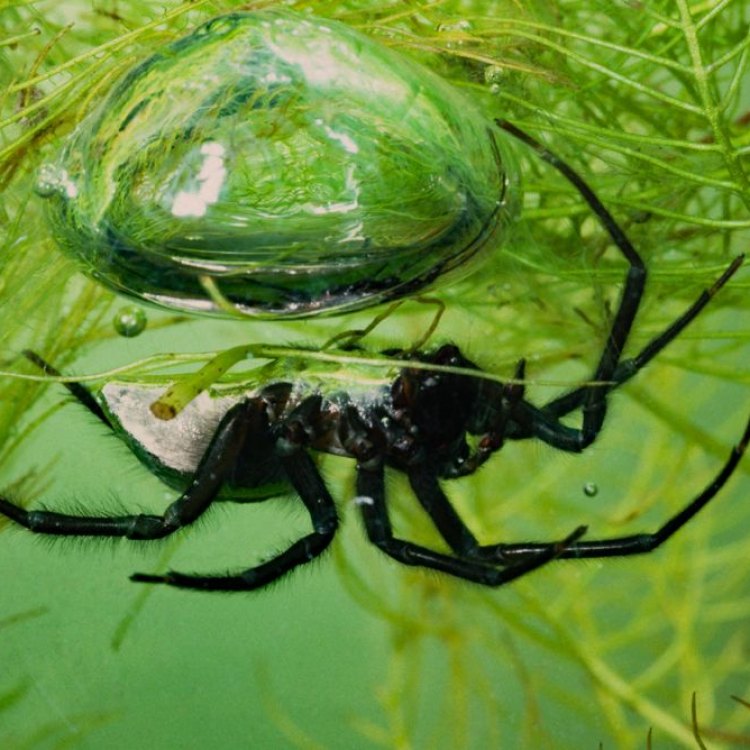
Argyroneta aquatica
The Fascinating World of the Diving Bell Spider
Imagine a spider living and thriving in the depths of water, diving and swimming with ease, and building its own underwater nest to survive. This may sound like a scene from a science fiction movie, but it is the reality of the diving bell spider, also known as the water spider.The diving bell spider (Argyroneta aquatica) is a unique species of spider found in Europe and Asia. It is the only known spider species that can live and hunt entirely underwater, making it one of the most fascinating creatures in the arachnid world PeaceOfAnimals.Com. This article will delve into the world of the diving bell spider and explore its distinctive features, behavior, and impact on the ecosystem.
Size and Lifespan
The diving bell spider may not be the largest spider in the world, but it is not small either. These spiders can reach an adult size of up to 1.5 centimeters in length, with a leg span of up to 8 centimeters. They are slightly larger than the average house spider and have a plump, round body. Despite their small size, they have a much longer lifespan compared to other spiders, typically living for 1 to 2 years.Reproduction and Mating Behavior
The diving bell spider is a sexually reproducing species, with males and females coming together to mate. However, their mating behavior is quite unusual compared to other spiders. The males do not use the traditional method of mating through direct contact with the female; instead, they build a unique silk mating web to attract females Dalmatian.The males start by building a shallow platform on the water's surface, using their silk and air bubbles. They then create a cone-shaped air bubble, which they fill with air, creating a bell-shaped structure. This bell-shaped structure serves as their mating chamber, where they wait for the females to arrive. The males use their front legs to create vibrations on the web, producing ripples that attract the females. Upon arrival, the female will enter the structure, where the mating takes place.
Sound and Communication
The diving bell spider is one of the few silent spiders in the animal kingdom, meaning it does not produce any sound or call. Its communication with other spiders is done mainly through vibrations and movements. As mentioned earlier, the males use these vibrations to attract females for mating, while they also use them to ward off potential predators.Migration and Social Behavior
Unlike other spider species that are known for their migratory patterns, the diving bell spider is a non-migratory species. They are solitary creatures, preferring to live alone and away from other spiders. They are also territorial and will defend their underwater nest aggressively. However, they do not show signs of aggression towards humans and are not considered a threat to humans.Behavior and Adaptations
The diving bell spider's most distinctive feature is its ability to live and breathe underwater. It is an excellent swimmer and diver, thanks to its elongated legs and water-repellent hairs on its body. Interestingly, these spiders create their own air bubble to breathe underwater. They collect air from the surface and transport it to their underwater nest, creating a diving bell. The diving bell acts as an air pocket, allowing the spider to remain submerged for extended periods.Another unique behavior of the diving bell spider is its method of hunting. It preys on aquatic insects, such as water beetles, larvae, and small fish. It ambushes its prey by swimming towards them and then dragging them back to its underwater nest. The diving bell spider paralyzes its prey with a venomous bite, wrapping them in silk for later consumption.
Threats and Conservation Status
The diving bell spider has faced significant threats in recent years due to habitat loss, pollution, and climate change. Water pollution has led to a decline in their prey, while climate change has altered the conditions in their habitat, making it challenging for them to survive. However, they have been classified as a species of "Least Concern" in the IUCN Red List, thanks to their wide distribution range and population size.Impact on the Ecosystem
Despite their small size, the diving bell spider plays a crucial role in the ecosystem, especially in their aquatic habitats. They are important predators of aquatic insects, and their presence helps to regulate the population of these insects, preventing them from becoming a nuisance. They also serve as a food source for birds, fish, and other aquatic predators, contributing to the balance of the ecosystem.Human Use and Interaction
The diving bell spider has no known use or interaction with humans. They are not used in traditional medicine or as a source of food, and they do not pose any danger to humans. However, their unique characteristics and behavior have made them a subject of interest for scientists and researchers, who continue to study and learn more about these fascinating creatures.Distinctive Features and Interesting Facts
The diving bell spider's ability to live and hunt entirely underwater is its most distinctive feature. While most spiders are terrestrial, this species has evolved to adapt to the aquatic environment, making it a one-of-a-kind creature.Apart from their underwater abilities, the diving bell spider is also the only spider species known to construct and live in its nest underwater. The name "diving bell" comes from the silken structure the spider creates to capture air and breathe underwater. This feature is unique and sets it apart from all other spiders.
Here are some interesting facts about the diving bell spider:
- The diving bell spider belongs to the family of spiders known as "sheet web spiders."
- They have a hairy body, which helps them trap air underwater and remain buoyant.
- The males are significantly larger than the females, which is unusual in most spider species.
- They have poor eyesight and rely mainly on their other senses, such as touch and vibrations, to navigate and hunt.
- The diving bell spider is considered a living fossil, with fossil evidence dating back to over 100 million years.
Predators of the Diving Bell Spider
Despite their impressive adaptations and abilities, the diving bell spider also falls prey to various predators. Their main predators are birds, fish, and other aquatic predators such as water beetles and dragonfly larvae. They are also susceptible to parasitic wasps, which lay their eggs on or inside the spider's body, eventually killing them.Conclusion
In conclusion, the diving bell spider is a remarkable species of spider that has defied the norms and evolved to survive entirely underwater. Their unique abilities, behavior, and adaptations make them one of the most fascinating creatures on Earth. However, their population is at risk due to human activities and climate change, highlighting the need for conservation efforts. As we continue to learn more about this extraordinary creature, let us also strive to protect and preserve their natural habitat for future generations to witness and appreciate.
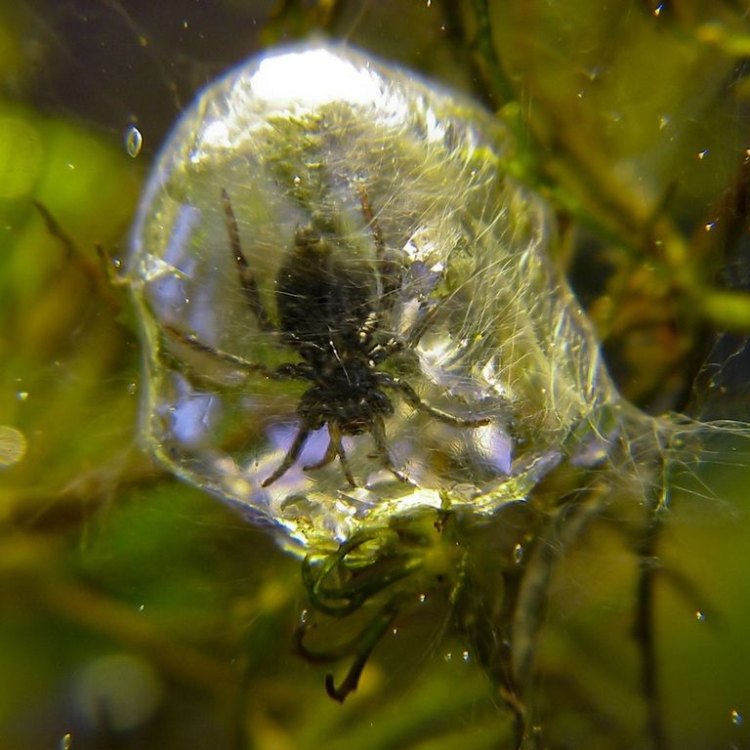
The Fascinating World of the Diving Bell Spider: A Master of Underwater Survival
Disclaimer: The content provided is for informational purposes only. We cannot guarantee the accuracy of the information on this page 100%. All information provided here may change without prior notice.



